Having been tinkering with LED strips for quite some years now, I do occasionally get the question: “What do the IP ratings mean?”.
There is a short answer for that question: It indicates its protection level against water and dust.
Obviously this doesn’t say much, and things are a little more advanced that that.
So in this article I’ll go briefly into the details on what kind of IP ratings you can run into and what they mean.
This way you can consider in what kind of environment you’d like to use your LED strip and find a matching IP code.
IP Rating or the LED strip Protection Rating
IP is the abbreviation for “Ingress Protection”, or in other words the protection rating for influences from outside of the LED strip.
Protection here refers to the impact of dust, contact with objects, liquids, etc.
The IP Rating has nothing to do with the used LED technology, it only tells us something about the “housing” of your LED strip (or lack there of).
The code is the text “IP” followed by a combination of up to 5 characters.
It is however quite common that the last 3 characters are being omitted (eg. IP20, IP65).
In short the code is build up like so:
IP Code
| IP |
Solids |
Liquids |
Mechanical |
Personnel |
Equipment |
| IP |
0-6, X |
0-8, X, 6K, 9K |
0-9 |
Letter |
Letter |
| Required |
Required |
Required |
Deprecated |
Optional |
Optional |
Every IP Rating always starts with “IP“, followed by at least two characters (a number or “X”), indicating the LED strip protection against solids and liquids.
The use of IP followed by two characters is what we see most commonly.
Ad Blocking Detected Please consider disabling your ad blocker for our website.
We rely on these ads to be able to run our website.
You can of course support us in other ways (see Support Us on the left).
IP Rating Codes explained
Let’s go through each segment of the available ratings, and see how we should read them.
As you can see in the table below, some make perfect sense, others can be a little weird to interpret.
IP Ratings details
| Field |
Values |
Meaning |
| Identifier |
“IP” |
Standard IP rating identified |
Solids
(objects touching
and/or dust) |
0-6, X |
0
1
2
3
4
5
6
X |
No protection agains solid objects
Objects > 50 mm (2″) diameter
Objects > 12 mm (0.49″) diameter
Objects > 2.5 mm (0.098″) diameter
Objects > 1,0 mm (0.039″) diameter
Limited Dust protection
Full dust protection
No data available (unknown) |
| Liquids |
0-8, 6K, 9K, X |
0
1
2
3
4
5
6
6K
7
8
9K
X |
No protection against liquids
Dripping water (vertical drops)
Dripping water (vertical and tilted up to 15° angle)
Splashing water (splashing up to 60° angle)
Splashing and Spraying water
Water jets (all directions, low power)
Water jets (all directions, high power)
Water jets (all directions, high power, increasing pressure)
Immersion/Submersion up to 1 meter (3 feet)
Immersion/Submersion 1 meter (3 feet) or more
High temperature water jets (wash down)
No data available (unknown) |
Mechanical
(no longer used) |
0-9 |
0
1
2
3
5
7
9 |
No protecting against mechanical impacts
Impact protection up to 0.225 Joule
Impact protection up to 0.375 Joule
Impact protection up to 0.60 Joule
Impact protection up to 2.0 Joule
Impact protection up to 6.0 Joule
Impact protection up to 20.0 Joule |
Personnel
protection
(often omitted) |
Letter |
A
B
C
D |
Back of a hand
Finger
Tool
Wire |
Equipment
protection
(often omitted)
|
Letter |
H
M
S
W |
High voltage
Motion
Stationary
Weather conditions |
Common Rating examples
Based on previous table, and common IP ratings seen for LED strip, here some examples:
IP20 Rating
An IP rating IP20 is suitable fo indoor use. It has limited protection against being hit by solid objects (2) and has no protection against liquids (0) that may short the strip.
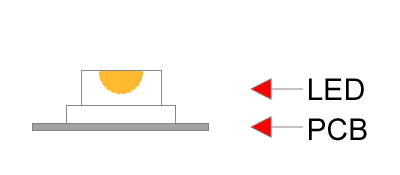
LED Strip Rating: IP20
IP20 could be used, say as decorative light behind your furniture or TV, or for placing the strip inside an object.
The individual LED’s are easy to access, and cutting a strip and/or attaching 2 strips is quite easy.
The downside is that you’ll have to pay attention to areas that are moist or dusty, and be careful what you use for mounting materials.
IP65 Rating
The IP rating IP65 is fully dust (6) and splash water (5) tight, you’ll find these typically covered in silicon.
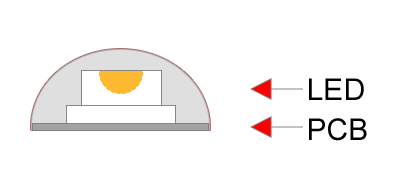
LED Strip Rating: IP65
This makes IP65 suitable for indoor and outdoor use, or even very suitable for bathrooms for example.
These are not intended for immersion/submersion though, even though you may get the impression they might be.
The typical silicon housing makes it nice to handle, and you do not easily need to worry about shorting things, which makes attaching these strips to something easier as well.
However, cutting and attaching 2 strips can be a little bit of a headache when having to remove the silicone without damaging the PCB or LEDs.
Note: Quite often a manufacturer makes IP64 and IP65 strips the same way.
Note: Some are covered in silicone (better), some are in a silicone tube.
IP68 Rating
Our last example, IP Rating IP68 is fully dust protected (6) and fully water protected (8).
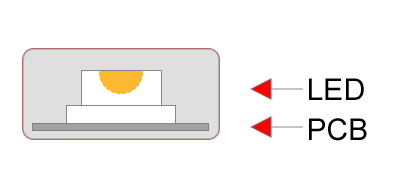
LED Strip Rating: IP68
This makes IP68 suitable for indoor, outdoor and even suitable for under water. Fore example in a Pool, Pond, Fish tank, or for use on boats.
All the pro’s and con’s are comparable to the ones of IP65.
The extra advantage is that you can submerge/immerse these in water.
Ad Blocking Detected Please consider disabling your ad blocker for our website.
We rely on these ads to be able to run our website.
You can of course support us in other ways (see Support Us on the left).
Overview table IP Ratings
For convenience, I created this table, which may help in finding the proper IP rating for your application.
This table only looks at the first 2 digits (solids/liquids), which is quite common when looking at LED strips.
Ratings printed in bold are common IP ratings we’ll see with LED strips.
The price difference between the different ratings, for LED strips, is often negligible.
Therefor my selection is usually the highest rating, keeping mind that I have to work with the strip (possible cut/attach, etc), mounting options, connectors used, and that matches the cosmetics of my the project.
IP Ratings Lookup Table
|
Limited contact
protection |
Medium contact
protection |
Better contact
protection |
Limited dust
protection |
Full Dust
protection |
| No water protection |
IP20 |
IP30 |
IP40 |
IP50 |
IP60 |
| Dripping |
IP21 |
IP31 |
IP41 |
IP51 |
IP61 |
| Dripping (up to 15° angle) |
IP22 |
IP32 |
IP42 |
IP52 |
IP62 |
| Dripping (up to 60° angle) |
IP23 |
IP33 |
IP43 |
IP53 |
IP63 |
| Splashing and Spraying |
IP24 |
IP34 |
IP44 |
IP54 |
IP64 |
| Water jet (low) |
IP25 |
IP35 |
IP45 |
IP55 |
IP65 |
| Water jet (high) |
IP26 |
IP36 |
IP46 |
IP56 |
IP66 |
| Submersion (up 1 meter/3 feet) |
IP27 |
IP37 |
IP47 |
IP57 |
IP67 |
| Submersion (> 1 meter/3 feet) |
IP28 |
IP38 |
IP48 |
IP58 |
IP68 |
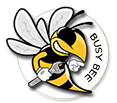
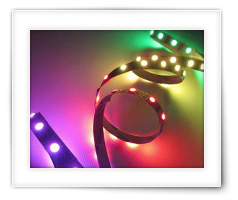



Comments
There are 4 comments. You can read them below.
You can post your own comments by using the form below, or reply to existing comments by using the "Reply" button.
Perfect timing dude, just what I was looking for. Thanks for putting this all together in a nice overview.
Angelo12
Thanks Angelo12 for taking the time to post a thank-you – it is much appreciated!
Hans
Interesting read. I knew the codes were protection related, but it’s nice to read the details behind the codes.
Thanks dude!
AnGeLo
Thank you Angelo for taking the time to post a Thank-You note! It’s very much appreciated!
Hans